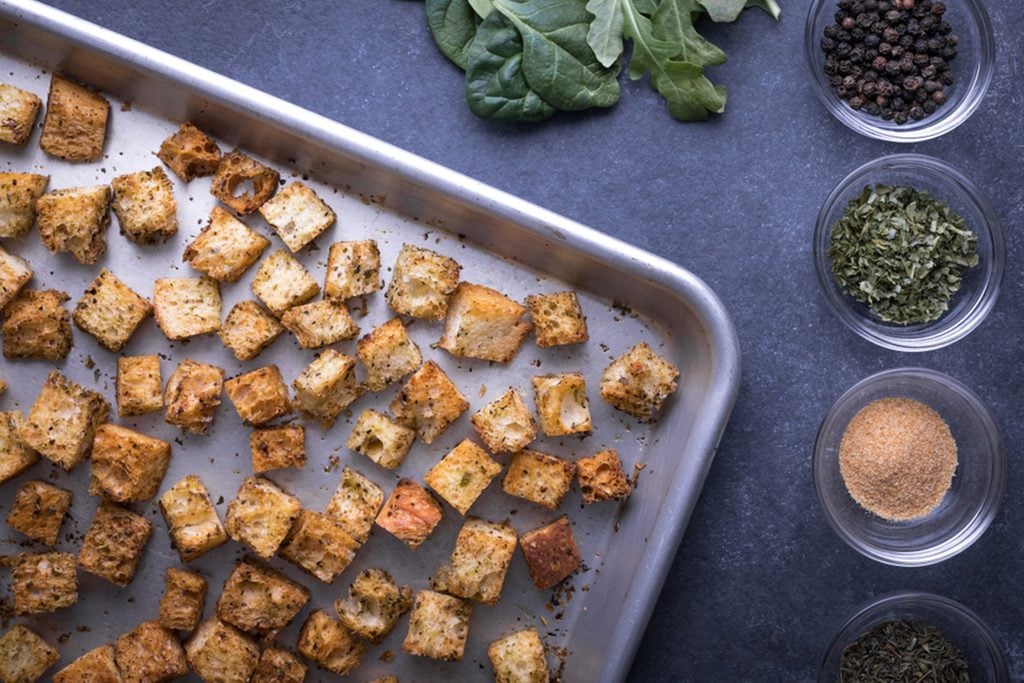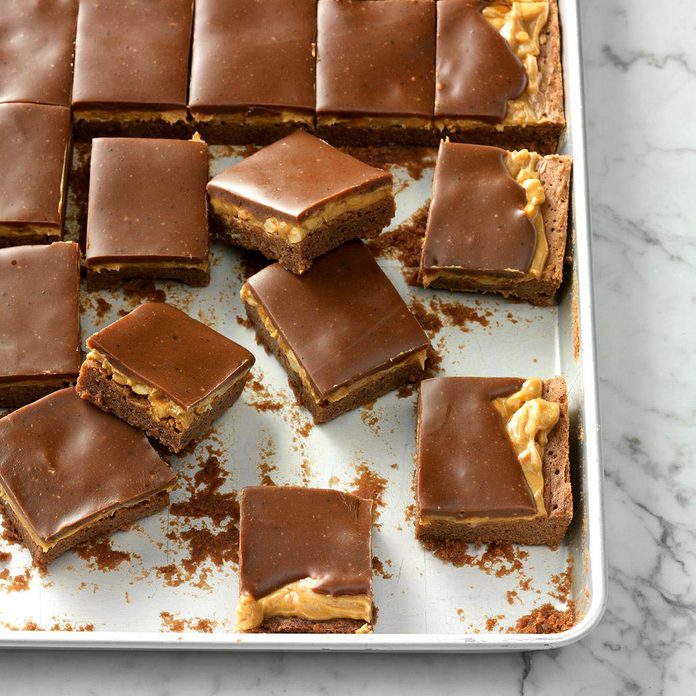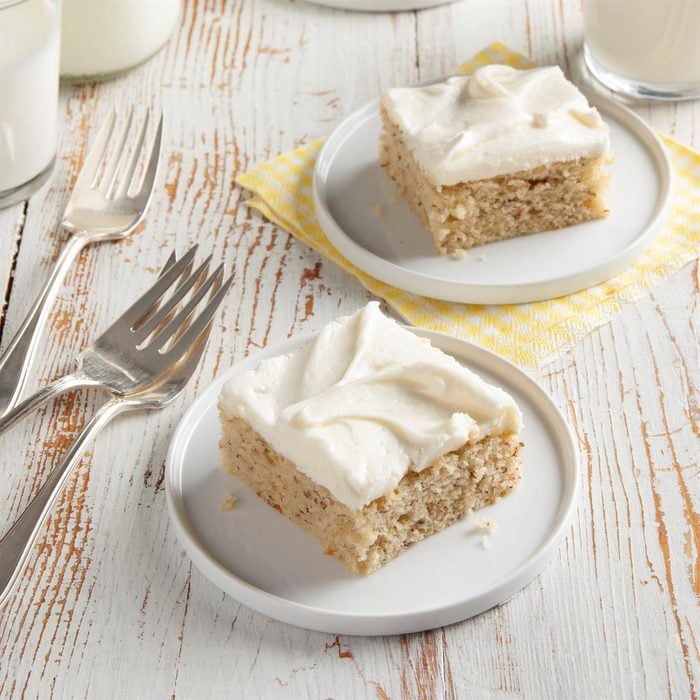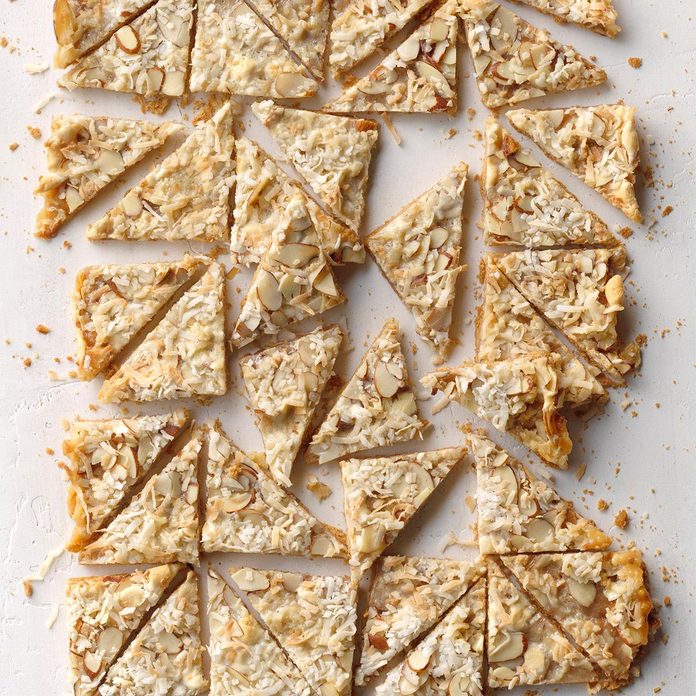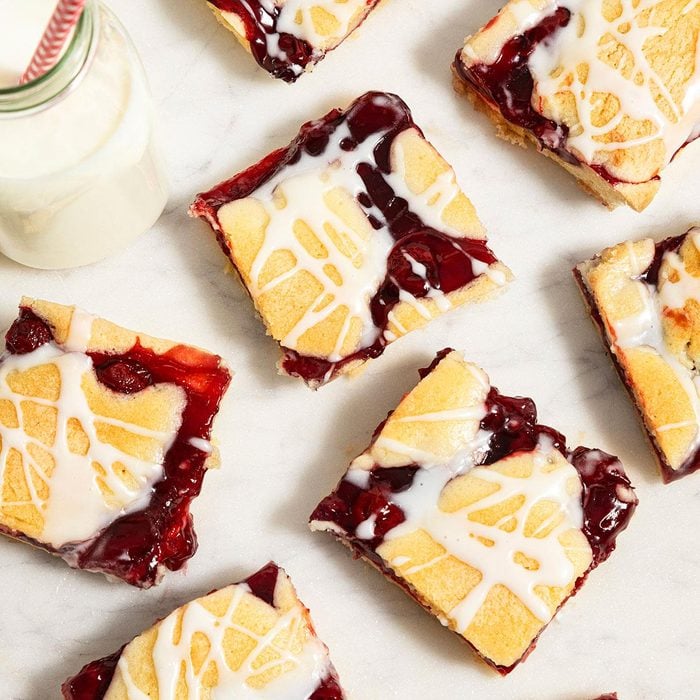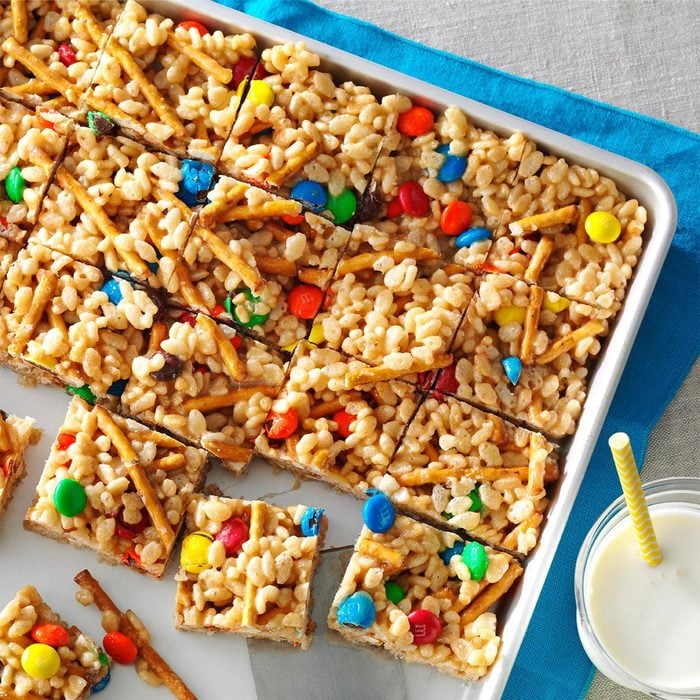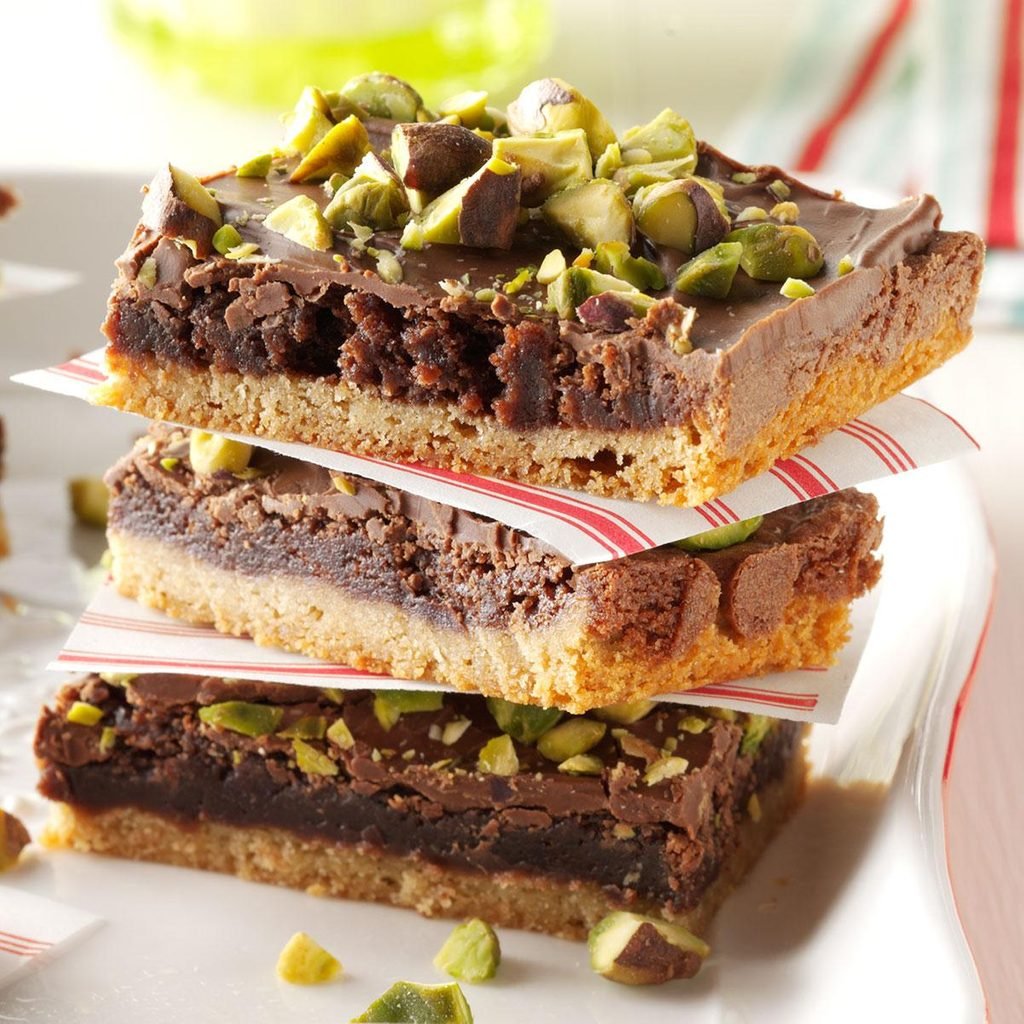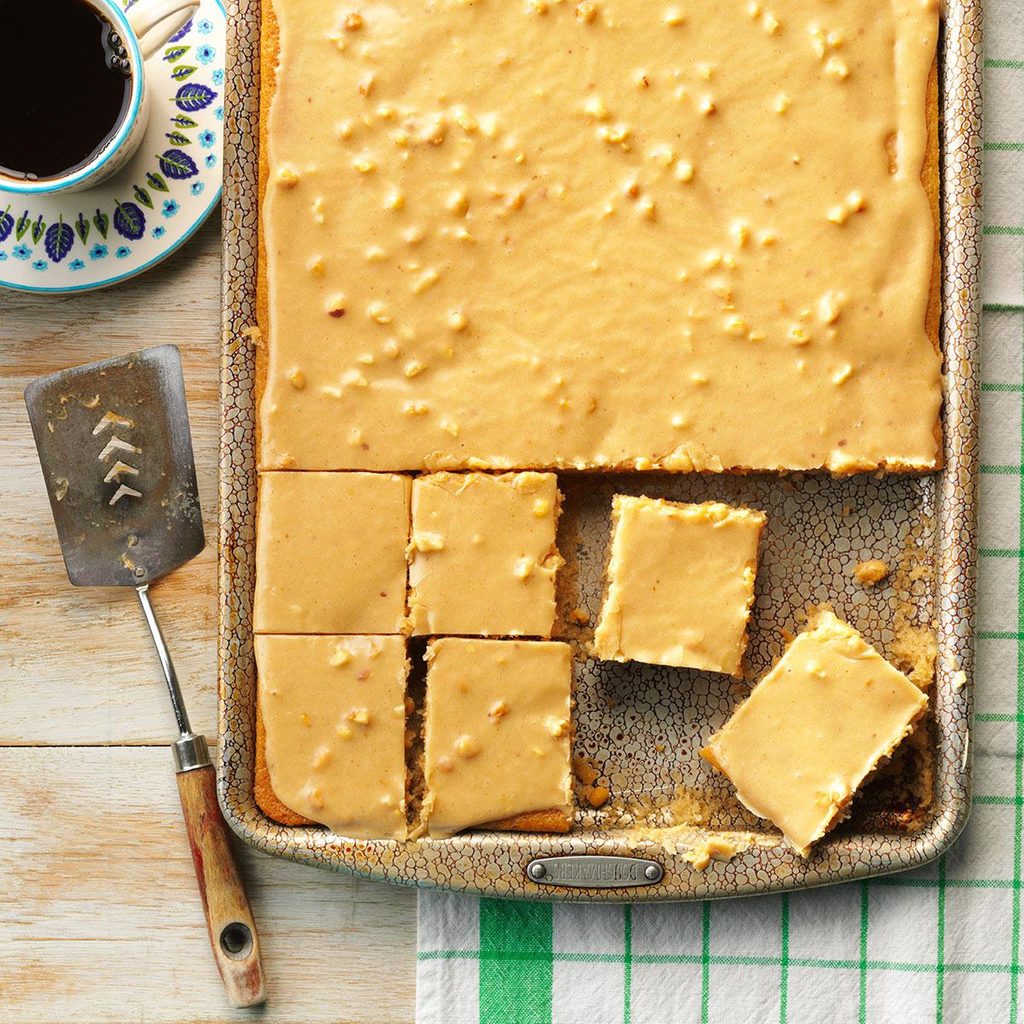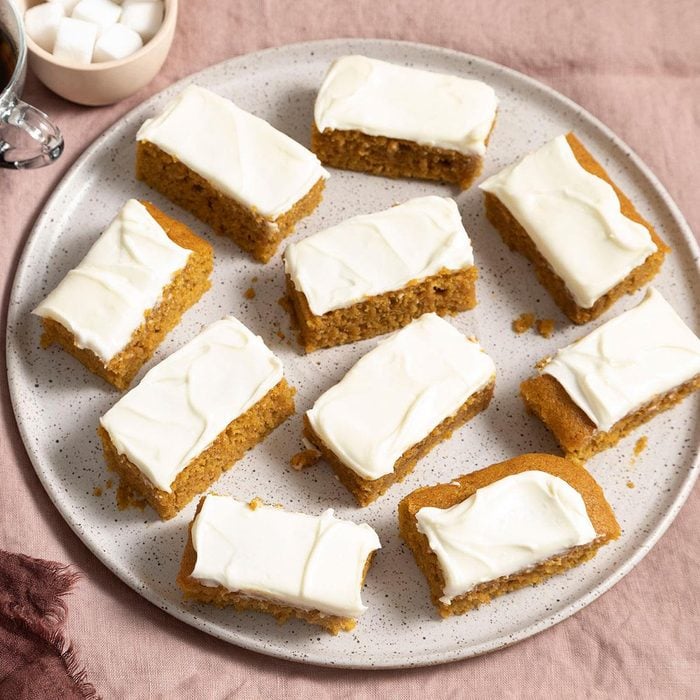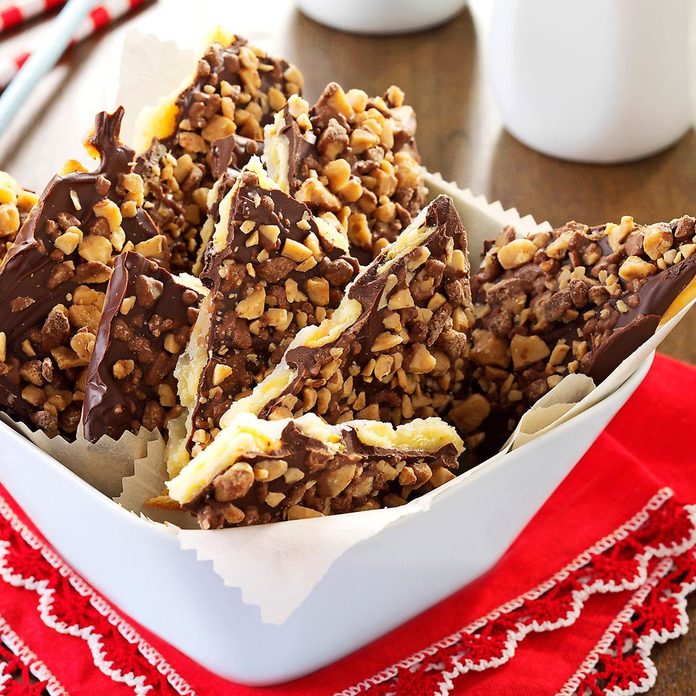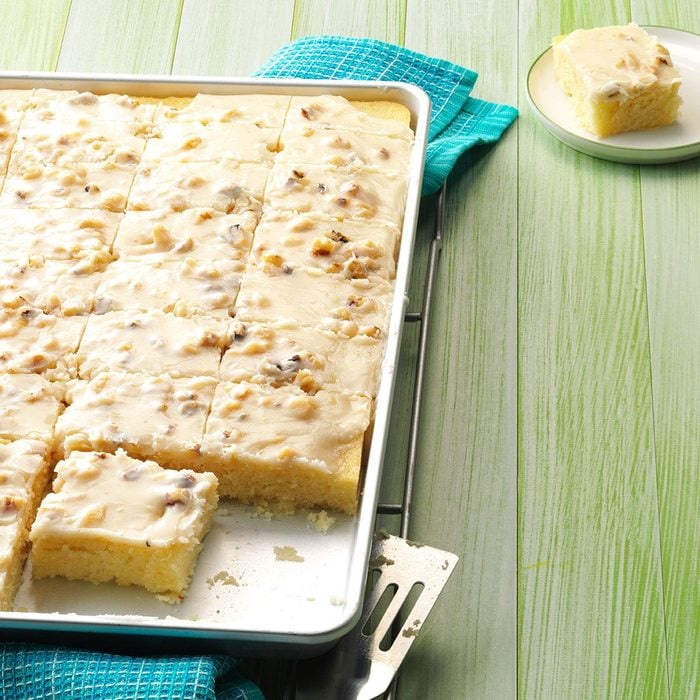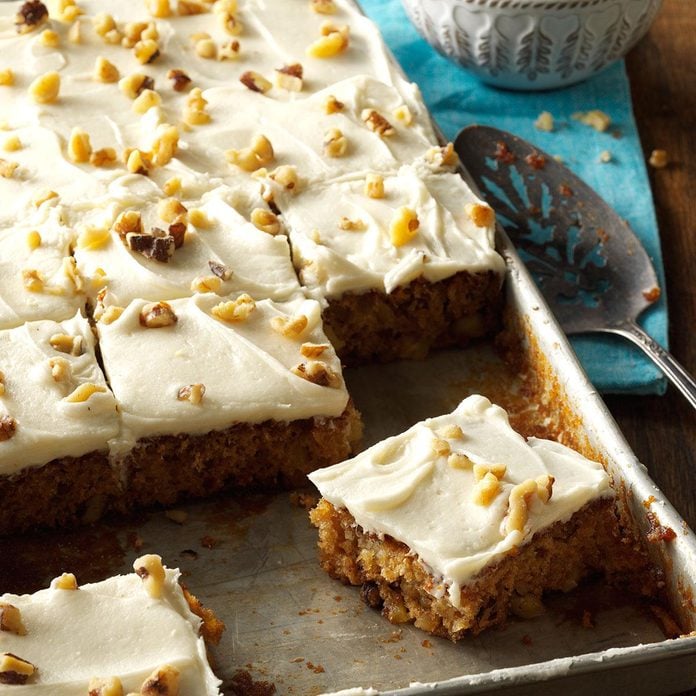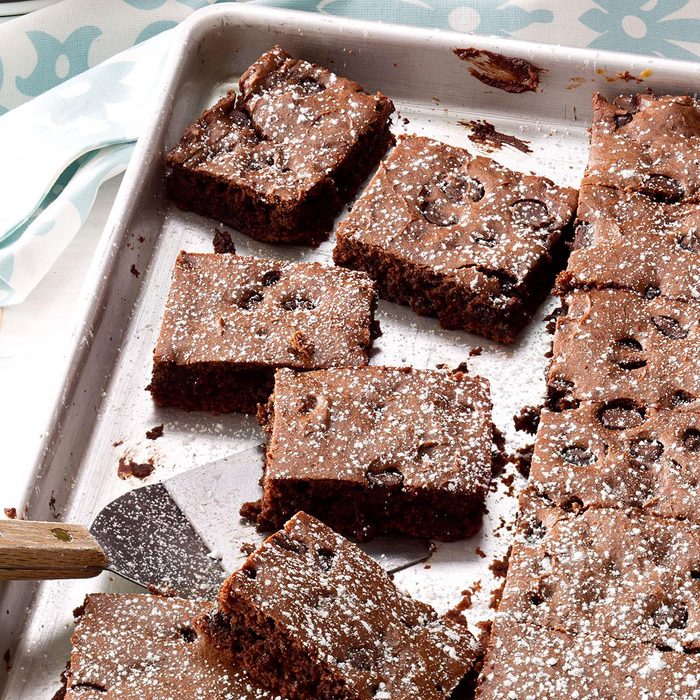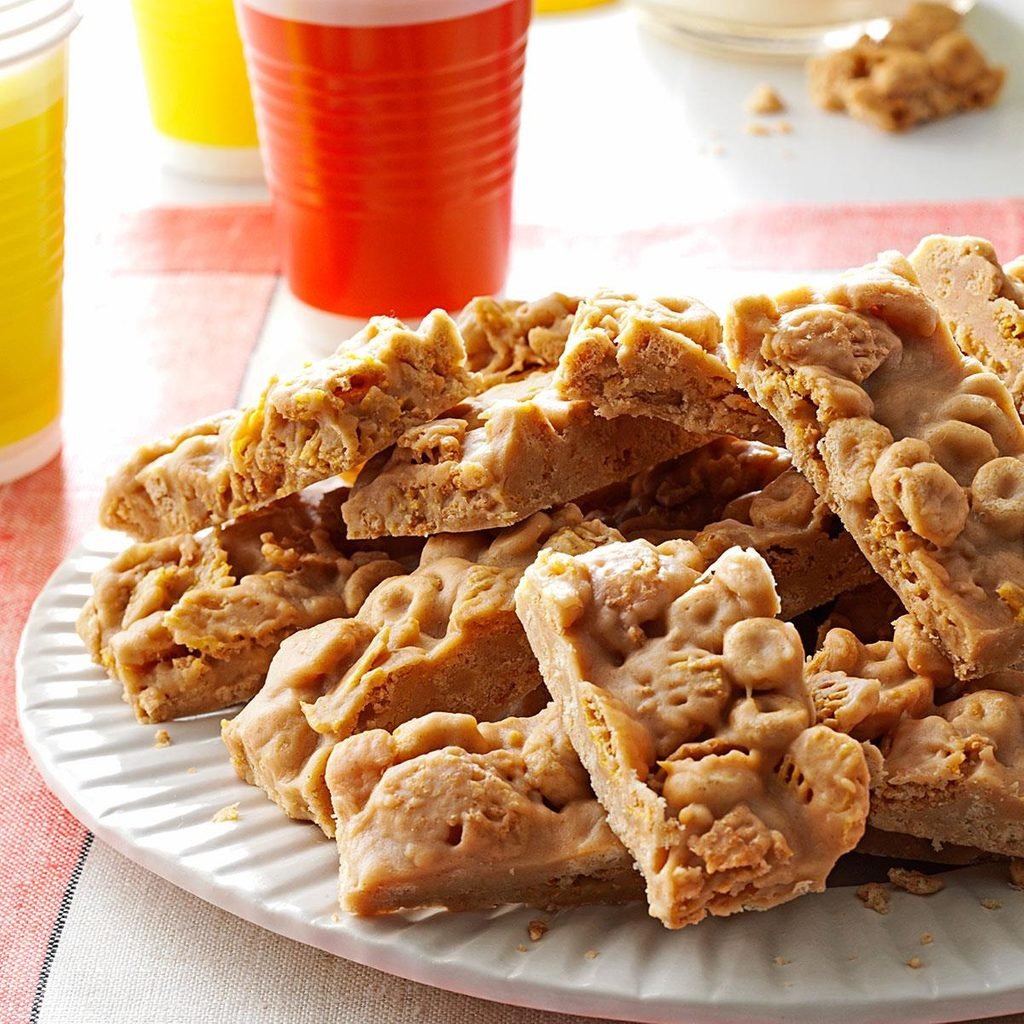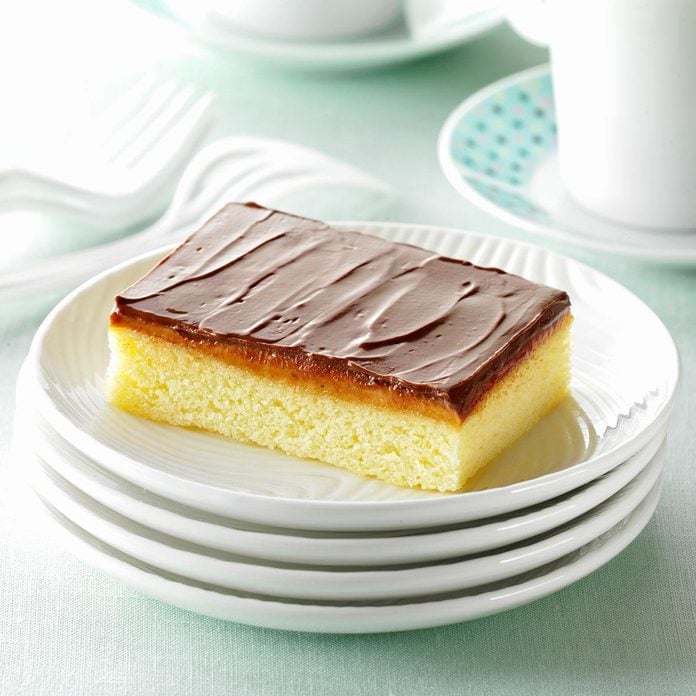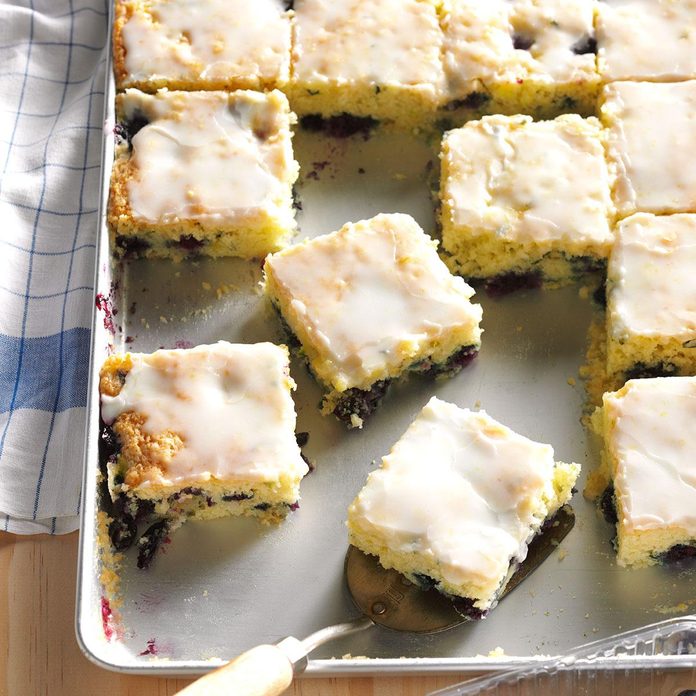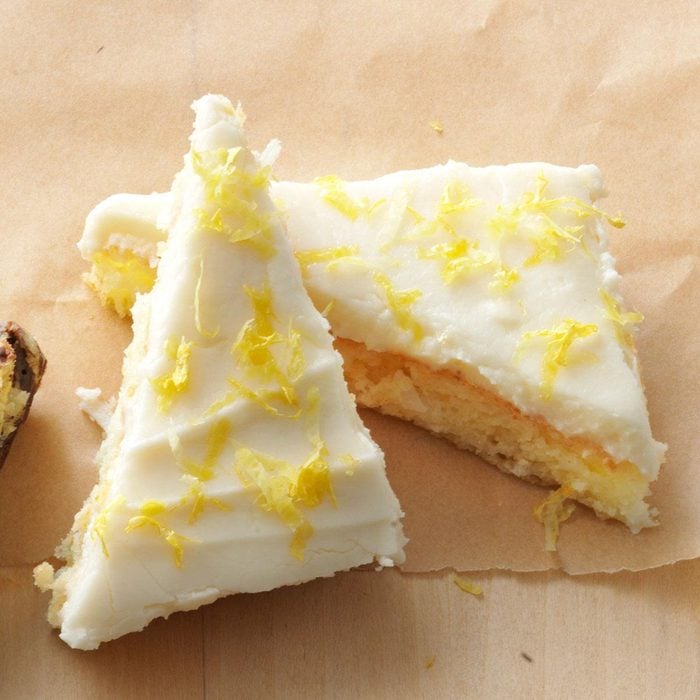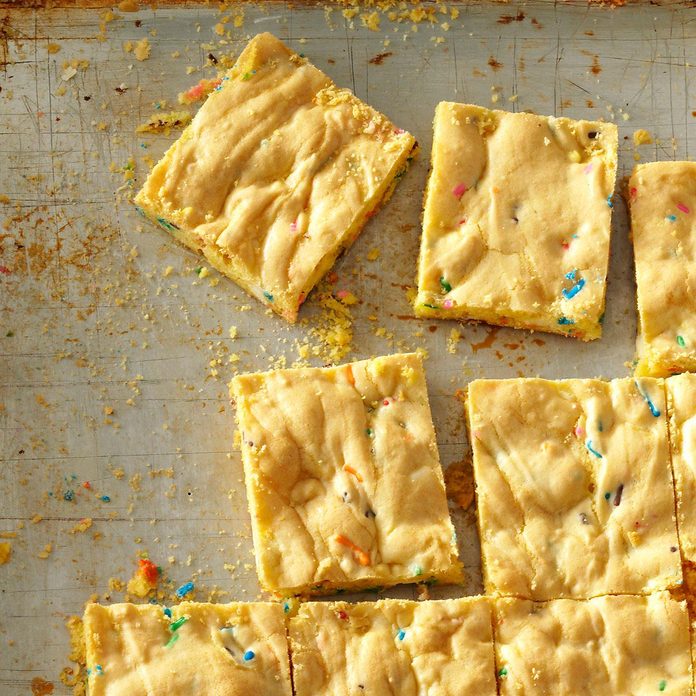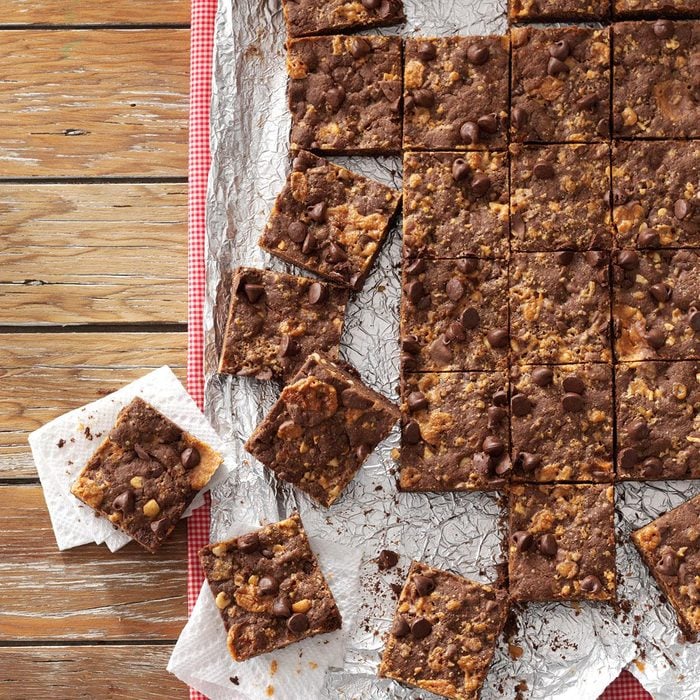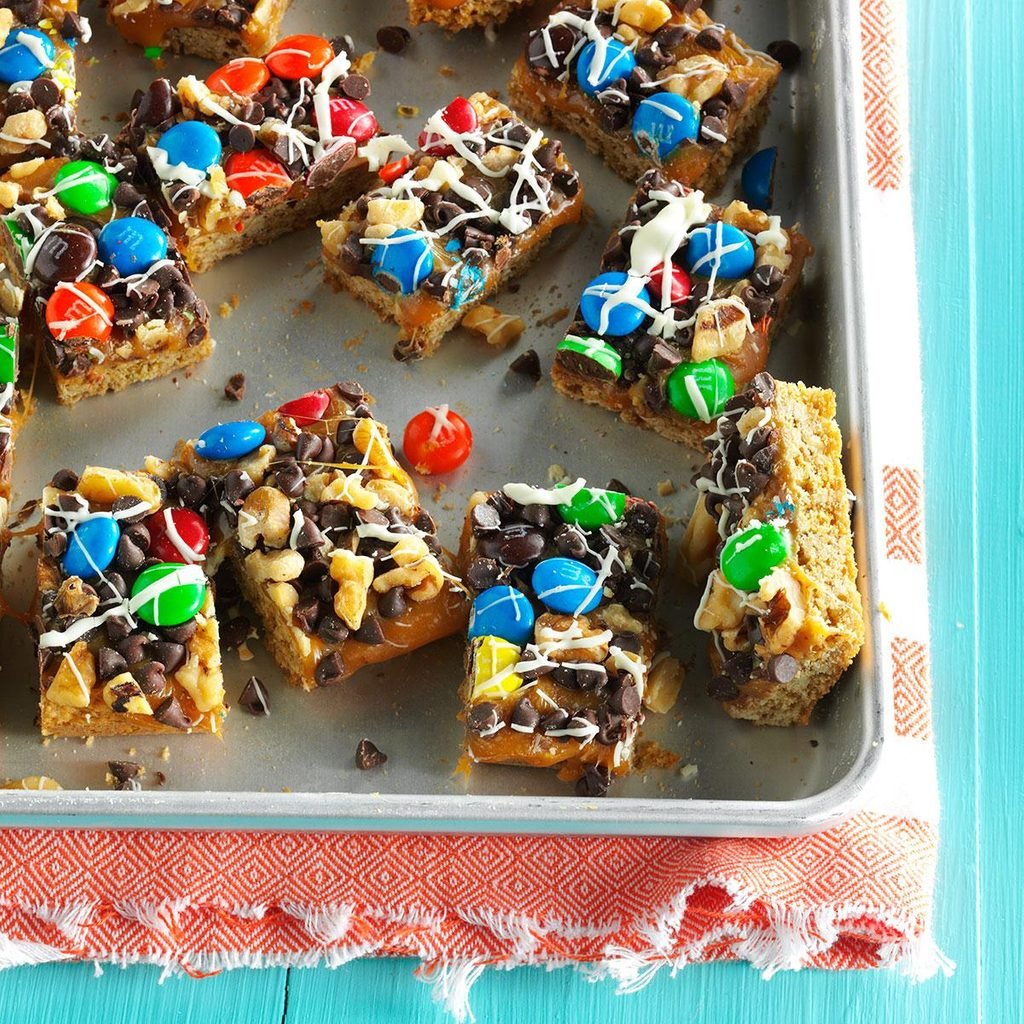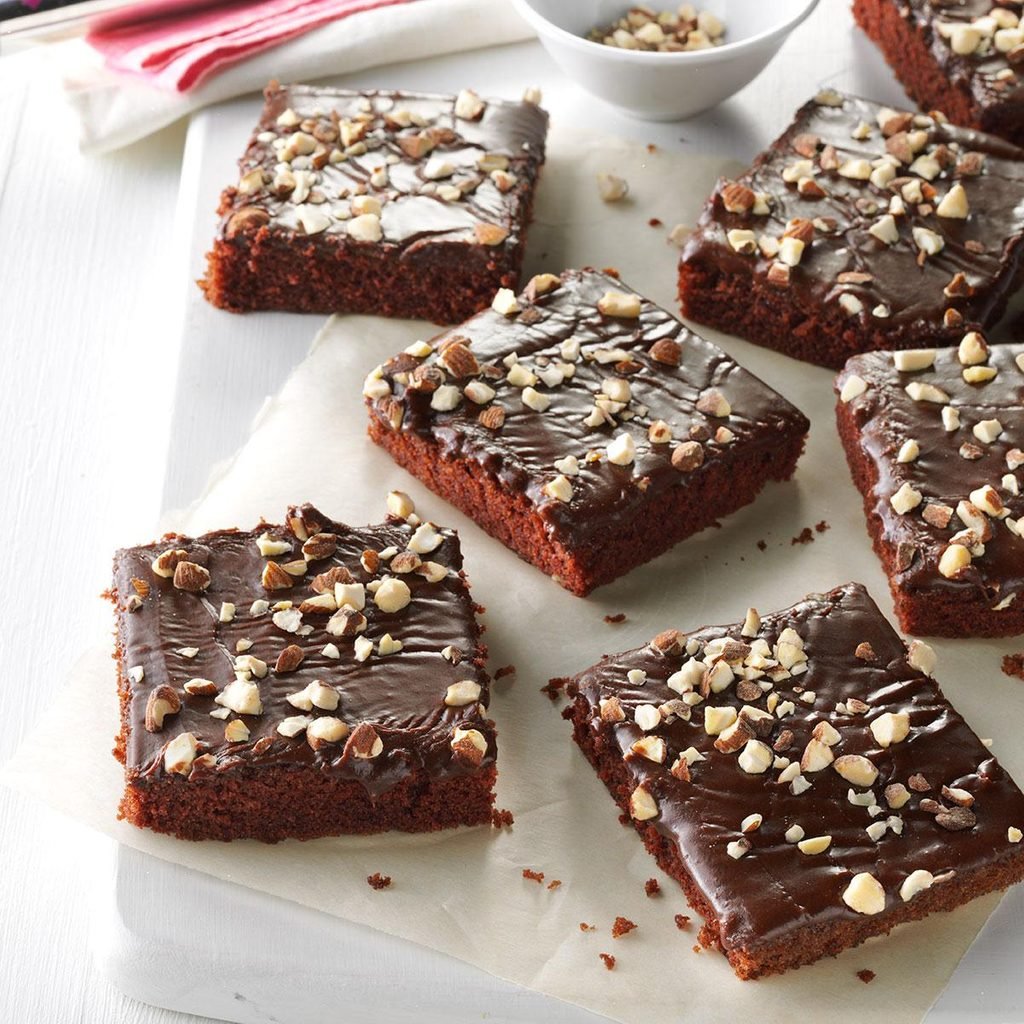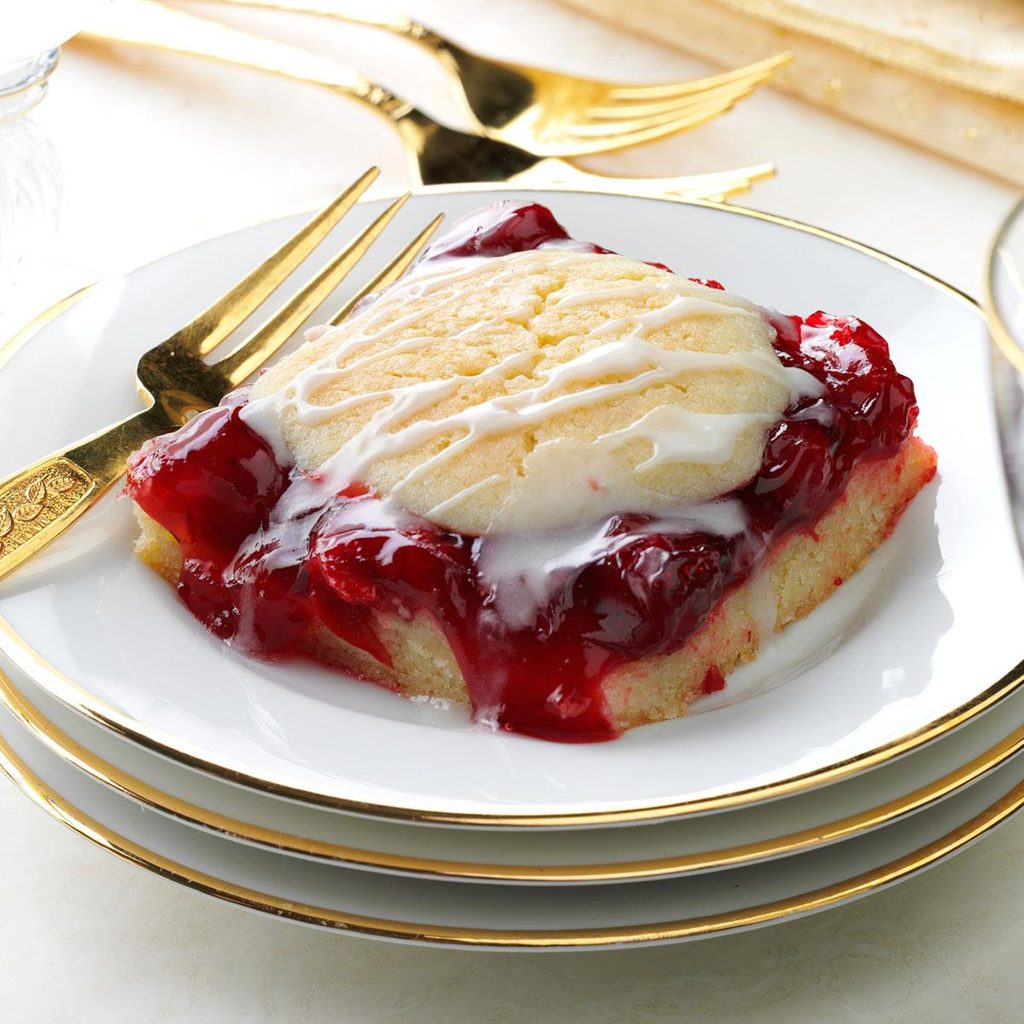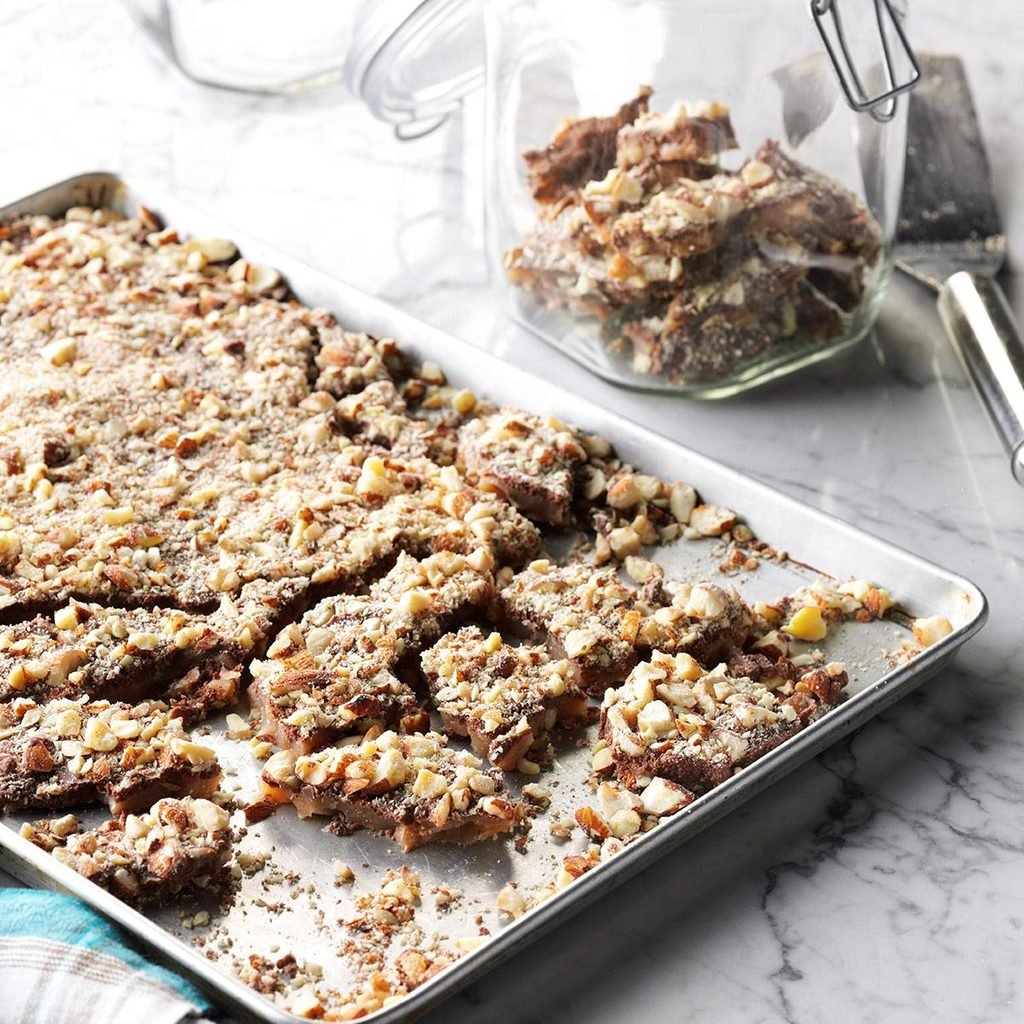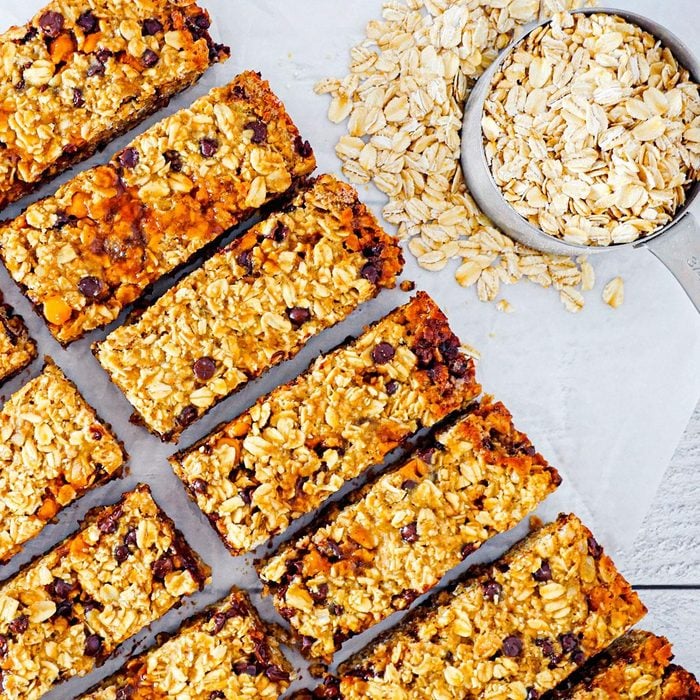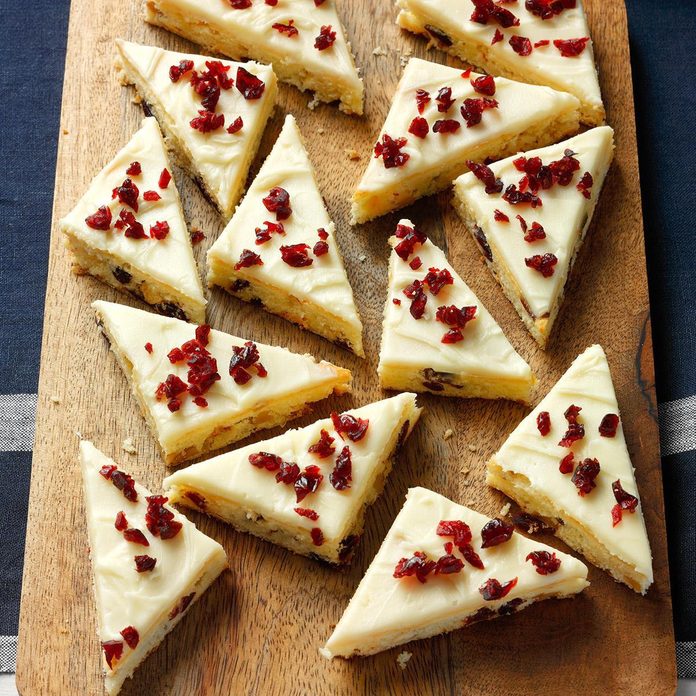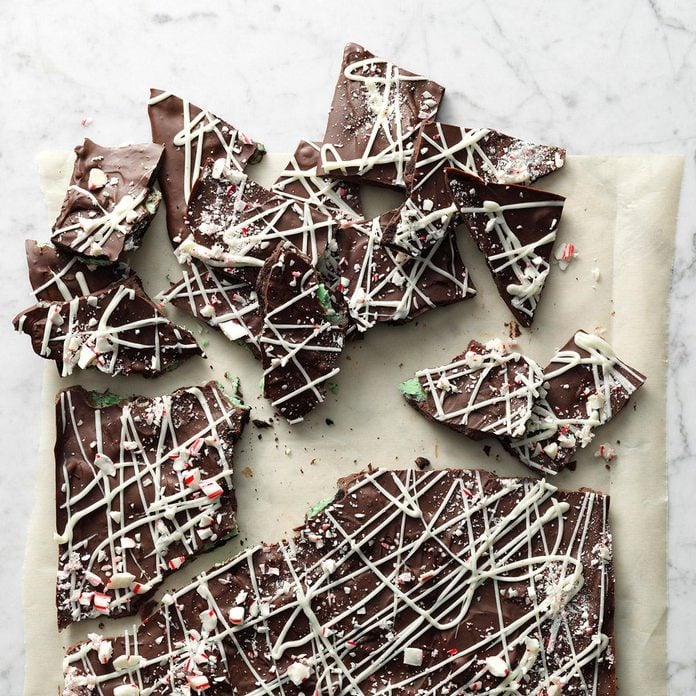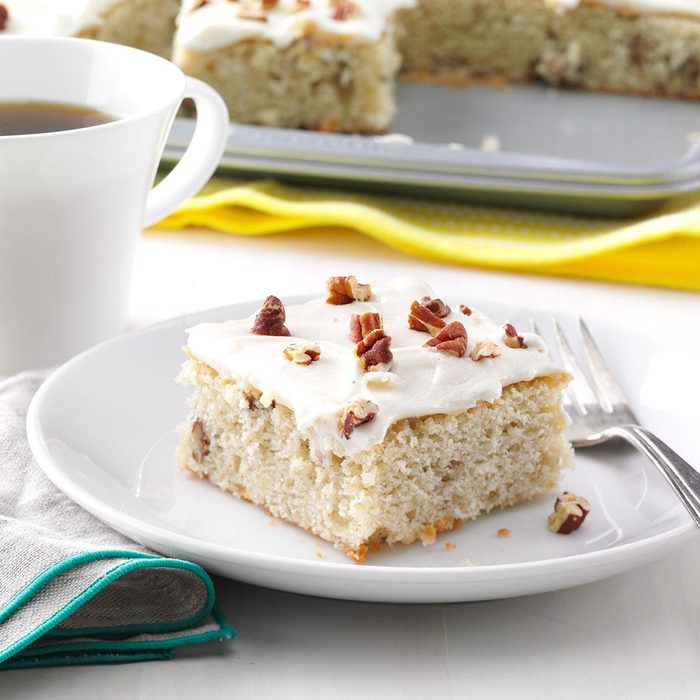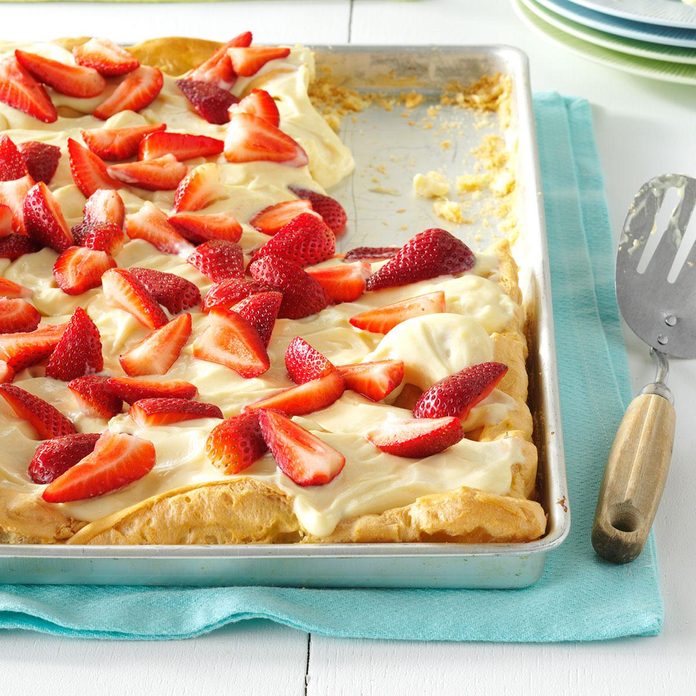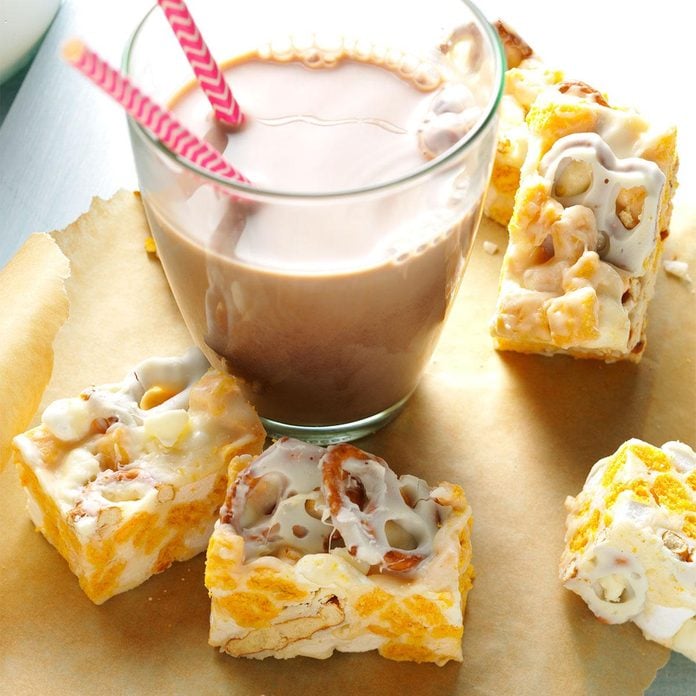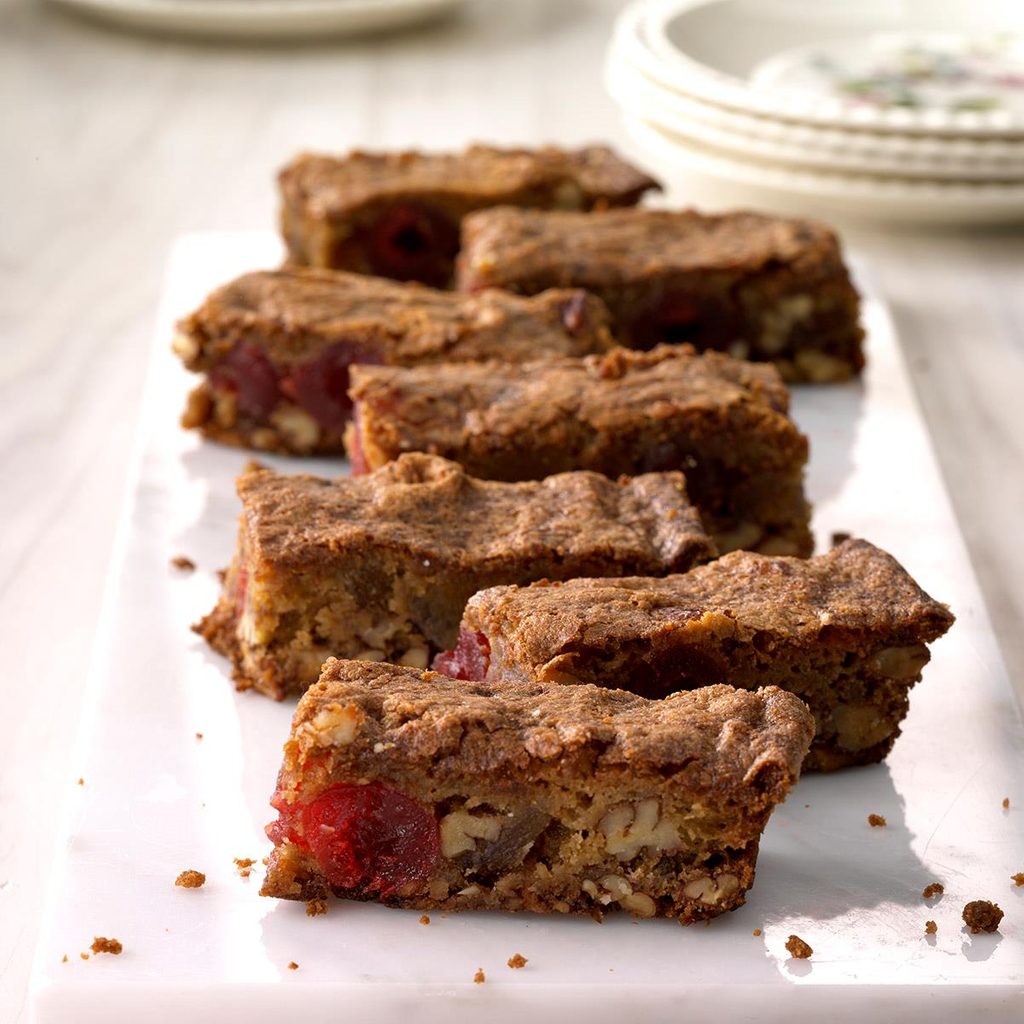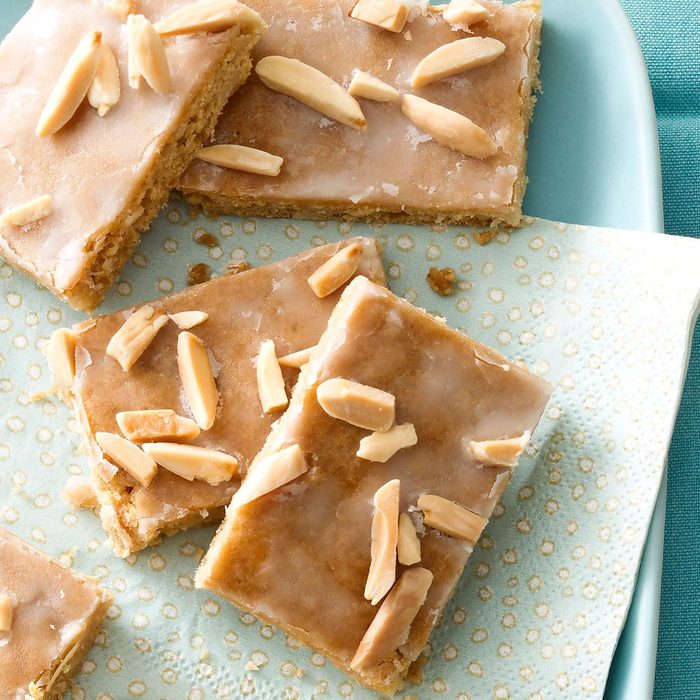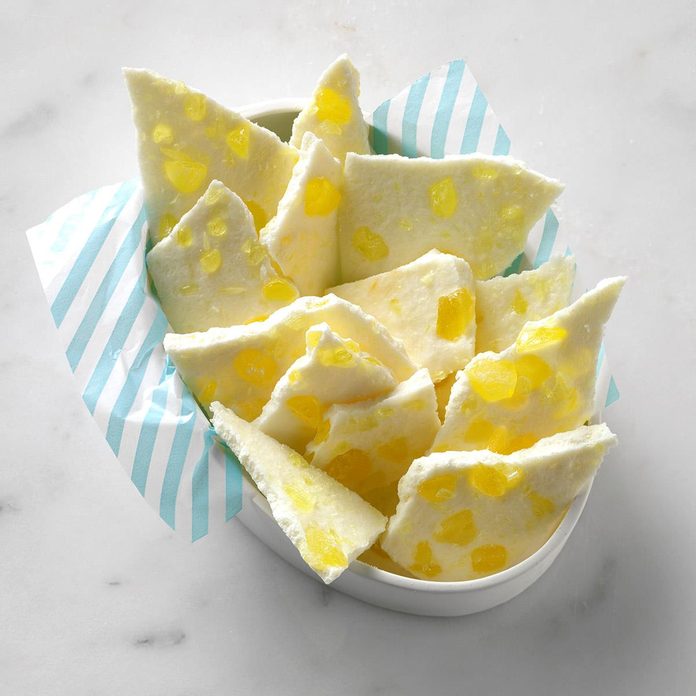Layered Chocolate Marshmallow Peanut Butter BrowniesA friend gave me the recipe for these layered brownies, but I added my own touch--chunky peanut butter. Every time I take these to a group gathering, I get requests for the recipe. It's a real crowd-pleaser! —Judy Sims, Weatherford, Texas
Banana Bars with Cream Cheese FrostingI make these banana bars with cream cheese frosting whenever I have ripe bananas on hand, then store them in the freezer to share later. With creamy frosting and big banana flavor, this treat is a real crowd-pleaser. —Debbie Knight, Marion, Iowa
Coconut-Almond Cookie BarkAs kids, my friends and I sandwiched Almond Joys between cookies. For our high school reunion, I re-created the idea with a tasty baked version that breaks apart like chocolate bark.—Faith Cromwell, San Francisco, California
Caramel HeavenliesBefore I cut these bars into triangles, I usually trim the edges so all the cookies will look the same. My husband and daughter love that part since they get to eat the scraps. —Dawn Burns, Lake St. Louis, Missouri
Cherry BarsWhip up a pan of these festive bars in just 20 minutes with staple ingredients and cherry pie filling. Between the easy preparation and the pretty colors, they're destined to become a holiday classic. —Jane Kamp, Grand Rapids, Michigan
Crispy Pretzel BarsI often make a big batch of these peanut butter-flavored cereal bars on days that I don't want to heat up the kitchen. Kids especially love them, so they're great for picnics, potlucks and school bake sales. —Jane Thompson, Eureka, Illinois
Pistachio Brownie Toffee BarsThese coveted brownie bars are homey and chocolaty awesome. They've been a sought-after staple on Christmas cookie trays for years. —Troy Shaw, Warrenton, Oregon
Peanut Butter Sheet CakeI received this recipe from a minister's wife, and my family loves it. —Brenda Jackson, Garden City, Kansas
Pumpkin BarsPumpkin bars with cream cheese frosting are the ultimate fall treat. But my family likes them so much, they ask me to make them all year long! —Brenda Keller, Andalusia, Alabama
Saltine Toffee BarkEveryone loves these salty-sweet treasures—their flavor is simply irresistible. The bark is like brittle, but better. Get ready for a new family favorite! —Laura Cox, Brewster, Massachusetts
White Texas Sheet CakeThis cake gets better the longer it sits, so I try to make it a day ahead. My mother-in-law introduced this deliciously rich sheet cake to me. With its creamy frosting and light almond flavor, no one can stop at just one piece! —Joanie Ward, Brownsburg, Indiana
Pineapple Sheet CakeThis sheet cake is perfect for serving to a crowd. It keeps so well that you can easily prepare it a day ahead and it will stay moist. I often bring it to church potlucks, and I have yet to take much of it home. —Kim Miller Spiek, Sarasota, Florida
Triple Fudge BrowniesWhen you're in a hurry to make dessert, here's a "mix of mixes" that's so convenient and quick. The result is a big pan of very rich, fudgy brownies. Friends who ask me for the recipe are amazed that it's so easy. —Denise Nebel, Wayland, Iowa
No-Bake Cereal BarsWith two kinds of cereal and peanut butter, these bars taste almost like candy. —Pauline Christiansen, Columbus, Kansas
Grandma's Tandy KakeMy grandmother made this for all our family gatherings. Everyone loves it now I make it for every party we attend or host. —John Morgan III, Lebanon, Pennsylvania
Blueberry Zucchini SquaresI saw a bar recipe using apple and lemon zest on a muffin mix. I tried it from scratch with shredded zucchini and fresh blueberries instead. It’s a nifty combo. —Shelly Bevington, Hermiston, Oregon
Lemon Angel Cake BarsA neighbor gave me this recipe years ago and it's been in flavor rotation ever since. It can be made ahead and serves a bunch, so it's perfect for parties and potlucks. —Marina Castle, Canyon Country, California
Easy Cake Mix BarsI take this dessert to work for Friday pick-me-ups. It's one of my favorite yellow cake bar recipes. I love to share them because they're so easy to eat, easy to make and easy on the wallet. —Amy Rose, Ballwin, Missouri
Honey Cinnamon BarsMy Aunt Ellie gave us the recipe for these sweet bar cookies with cinnamon and walnuts. Drizzle with icing, and serve with coffee or tea. —Diane Myers, Star, Idaho
Butterfinger Cookie BarsMy boys went through a phase where they loved Butterfingers. We made Butterfinger shakes, muffins, cookies and experimented with different bars; this one was voted the best of the bunch. Make sure you have an extra candy bar on hand because it’s hard to resist a nibble or two while you’re chopping. —Barbara Leighty, Simi Valley, California
M&M Oat BarsThese irresistible bars can sweeten any holiday. —Renee Schwebach, Dumont, Minnesota
Chocolate Buttermilk SquaresEvery time I take these squares to a potluck, my pan comes back clean. At home, they vanish as fast as I make them. —Clarice Baker, Stromsburg, Nebraska
Cherry Cobbler BarsCraving an oven-fresh fruit cobbler? This cheery twist on the classic treat is old-fashioned comfort food at its finest. The cherries peeking out of the topping make it a pretty addition to a holiday spread. Feel free to use any flavor pie filling to suit your taste. —Mary Boge, Red Boiling Springs, Tennessee
Aunt Rose's Fantastic Butter ToffeeI don't live in the country, but I love everything about it—especially good old-fashioned home cooking! Every year, you'll find me at our county fair, entering a different contest. This easy toffee recipe is a family favorite. —Kathy Dorman, Snover, Michigan
Kahlua Fudge Sheet CakeI make this cake for my grandsons. It's a quick and easy recipe that's perfect for chocolate and marshmallow cream lovers.—Nancy Heishman, Las Vegas, Nevada
Gluten-Free Oatmeal Chip BarsWith two busy boys who would rather move around than sit and eat, I needed a gluten-free, hearty, hand-held treat that could double as a quick breakfast, brunch, lunch or snack. This is a favorite of theirs, and I can change it up to accommodate ingredients I have on hand. —Susan James, Cokato, Minnesota
Cranberry Bars with Cream Cheese FrostingWhen I place a pan of these bars in the teachers' lounge and come back after the last bell, the pan is always empty. I'd say that's a good thing. White chocolate chips and cranberries make them extra special. —Mirella Hackett, Chandler, Arizona
Oreos and Candy Cane Chocolate BarkThere are incredible surprises in this festive bark, including dark chocolate, candy canes and cream-filled cookies. We keep a big supply ready for gift-giving. —Robin Turner, Lake Elsinore, California
Banana-Pecan Sheet CakeA dear friend of mine gave me this recipe, and I make it often, especially for potlucks. Sometimes I make it ahead, freeze the cake and then frost it before the party. —Merrill Powers, Spearville, Kansas
Strawberry BlissYou'll love this homemade puff pastry crust topped with a soft-set pudding layer that has a hint of strawberry flavor. This dessert needs to chill for at least an hour, so it's a fabulous make-ahead dish. —Candace Richter, Stevens Point, Wisconsin
Browned Butter Cereal BarsCrispy rice treats were one of the first recipes I ever made as a kid. For this version, I wanted to make something similar but more special. Friends and family think using Cap'n Crunch and browned butter is genius, but I just call them delicious.—Kelly Krauss, Lebanon, New Jersey
Chocolate Chip & Pecan Meringue BarsI've had recipes for chocolate chip cookies and pecan meringues in my collection for a number of years—and I combined them to make these bars! They're a lovely addition to any holiday cookie tray. —Dawn Lowenstein, Huntingdon Valley, Pennsylvania
Grandma's Pecan Rum BarsMy grandmother handed down the recipe for these gooey bars that we all love. The candied cherries are a must. —Deborah Pennington, Falkville, Alabama
Almond Espresso BarsIf you like coffee, you'll love these mocha morsels dressed up with toasted almonds. Save a few bars for afternoon snacktime or even breakfast, too. —Taire Van Scoy, Brunswick, Maryland
Lemon BarkI wasn't a fan of white chocolate until I made this candy. It's tangy, sweet and creamy all at the same time. The bark was a lovely treat during a springtime shower but would be nice year-round. —Diana Wing, Bountiful, Utah
